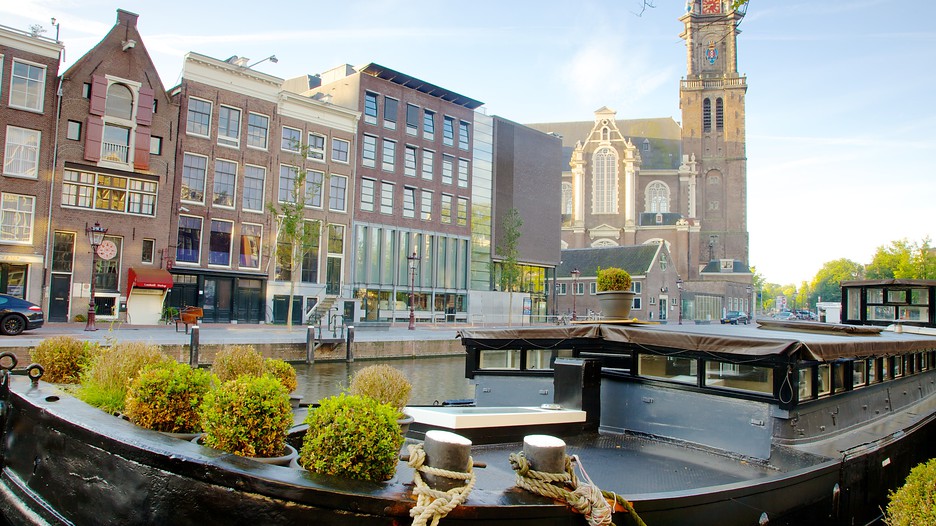A visit to
the Anne Frank House is a sober yet enlightening experience. The life
story of Anne Frank has become one of the most famous accounts of a Jew
hiding in Nazi Germany. Anne’s diary, which she started in 1942 when she
was 13, is the most translated Dutch book of all time. Its first
translation was in German, in 1950.
Anne Frank’s original diary is on display in the museum and so is the tiny attic where she spent most of the war. The two families in hiding were discovered in 1944 and sent to concentration camps. Only Anne’s father survived the ordeal and set out to publish the diary of his youngest daughter so their plight wouldn’t be forgotten. About 107,000 Dutch Jews were deported during the Holocaust and less than five percent returned. One of the brave people who helped Anne’s family hide saved her diary from the ransacked shelter.

Visit the cramped shelter in the old canal house, which is part of the museum. The attic’s stairs were hidden behind a bookshelf, which is still there. The rooms are littered with poignant reminders of the war. Look for the map on which Anne’s father Otto recorded the progress of Allied troops who freed the Dutch in 1945.
A modern annex houses most of the exhibits and a bookshop. Buy an English edition of Anne’s diary and see the Dutch original in the Diary Room, along with Anne’s short stories and a notebook of her favorite quotes. The introductory movie with war images tells a horrific story and may be too upsetting for some.
The Anne Frank House is located on the Prinsengracht and can be reached by taking a tram, canal boat or bus to Westermarkt. It’s also a 20-minute walk from Dam Square. The house is open daily and there is usually a long line for entrance. Make sure you come early or pre-book your tickets through the official website. Photography is prohibited.
Anne Frank’s original diary is on display in the museum and so is the tiny attic where she spent most of the war. The two families in hiding were discovered in 1944 and sent to concentration camps. Only Anne’s father survived the ordeal and set out to publish the diary of his youngest daughter so their plight wouldn’t be forgotten. About 107,000 Dutch Jews were deported during the Holocaust and less than five percent returned. One of the brave people who helped Anne’s family hide saved her diary from the ransacked shelter.

Visit the cramped shelter in the old canal house, which is part of the museum. The attic’s stairs were hidden behind a bookshelf, which is still there. The rooms are littered with poignant reminders of the war. Look for the map on which Anne’s father Otto recorded the progress of Allied troops who freed the Dutch in 1945.
A modern annex houses most of the exhibits and a bookshop. Buy an English edition of Anne’s diary and see the Dutch original in the Diary Room, along with Anne’s short stories and a notebook of her favorite quotes. The introductory movie with war images tells a horrific story and may be too upsetting for some.
The Anne Frank House is located on the Prinsengracht and can be reached by taking a tram, canal boat or bus to Westermarkt. It’s also a 20-minute walk from Dam Square. The house is open daily and there is usually a long line for entrance. Make sure you come early or pre-book your tickets through the official website. Photography is prohibited.
